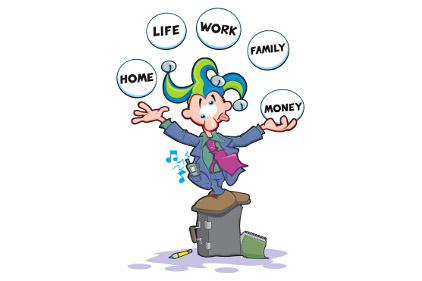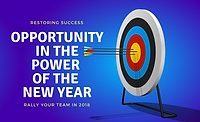 You can go to workshops about time management, read countless articles about work-life balance and yet nobody can truly understand the juggle of a restorer, well, like a restorer can.
You can go to workshops about time management, read countless articles about work-life balance and yet nobody can truly understand the juggle of a restorer, well, like a restorer can.
Schedules, lists and plans can fly out the window in minutes. We watch the weather, have alerts on pending threats sent to us and yet all the planning, foresight and preparation can’t completely control chaos that is just around the corner at any time. Just last week, I went to my office to take a phone call. It was quiet, you could hear the tap of keyboards, the hum of the copier and only 20 minutes later after completing my phone call, as I walked out of my office, the phones were ringing off the hook and people were running out the door with work orders, supplies and smiles on their faces.
“What is going on?” I asked.
“Where have you been?! A hailstorm just passed through and left a trail of destruction!”
I was in my office for 20 minutes. Roofs were damaged, windows were shattered and cars were totaled in minutes.
Restorers thrive in chaos. I always say that the job isn’t for everyone. You have to be a person who can think fast on their feet, roll with rapid changes in plans and schedules. Any day can be like a jigsaw puzzle honoring existing commitments, responding to varying volumes of emergencies and then you have to fit in the to-do list. Yes, every profession has an element of this, but for the professional restorer, it is beyond a job - it is a way of life. It is in your DNA.
For those who embrace this lifestyle, they can’t imagine life differently. Adrenaline and the satisfaction of helping people and going to bed a “good tired” is something that you embrace and thrive on. Your families and friends understand that in the middle of dinner, you may be called to duty. You are flexible and yet have an extreme sense of urgency. The very essence of what makes us great restorers can also challenge us as an organization. We use the saying, “Don’t let your strength become your weakness.” The following are a couple of considerations for the chaotic life of the professional restorer and your organization:
Schedules
Just because schedules change rapidly does not mean that we should forgo laying them out. Scheduling in the restoration industry is a skill, an art that is learned and developed:
· Individual Jobs: Each job should have a detailed plan and job schedule.
· Individual Team Members: Each team member should be scheduled out so that you can constantly monitor your resources and everyone knows the plan.
Although the schedule may change, if you don’t have a plan, you can’t get back to it when the chaos has passed. We still must honor our commitments to our customers and to each other.
Goals
“Goals are dreams with deadlines.” - Diane Scharf Hunt
Don’t deprive yourself as an individual professional or as an organization of goals. We must set realistic goals and monitor them. The flexibility and ability to deal with chaos should be balanced with goals and planning.
Prioritize
We will always have a to-do list. Professional restorers must be good at prioritizing and reprioritizing. It becomes instinctive to understand what the most important thing is right now. Strike a balance of staying focused and motivated to your tasks and goals with accepting that you may not get it all done when you wanted to get it all done. Avoid becoming frustrated.
Do it Right the First Time
“If you don’t have time to do it right, when will you have time to do it over?” - John Wooden
Our love of a fast-paced lifestyle, flexibility and quick thinking are attributes of the professional restorer. We must balance this strength with the ability to think things through and not be reactionary. We must take the time to do things right the first time.
This business is not for everyone. It is not about “good” or “bad.” It is a special and unique person, personality, and therefore organization. It is in our DNA. We must juggle the juggling that makes us who we are and not let our strengths become our weaknesses.





Report Abusive Comment